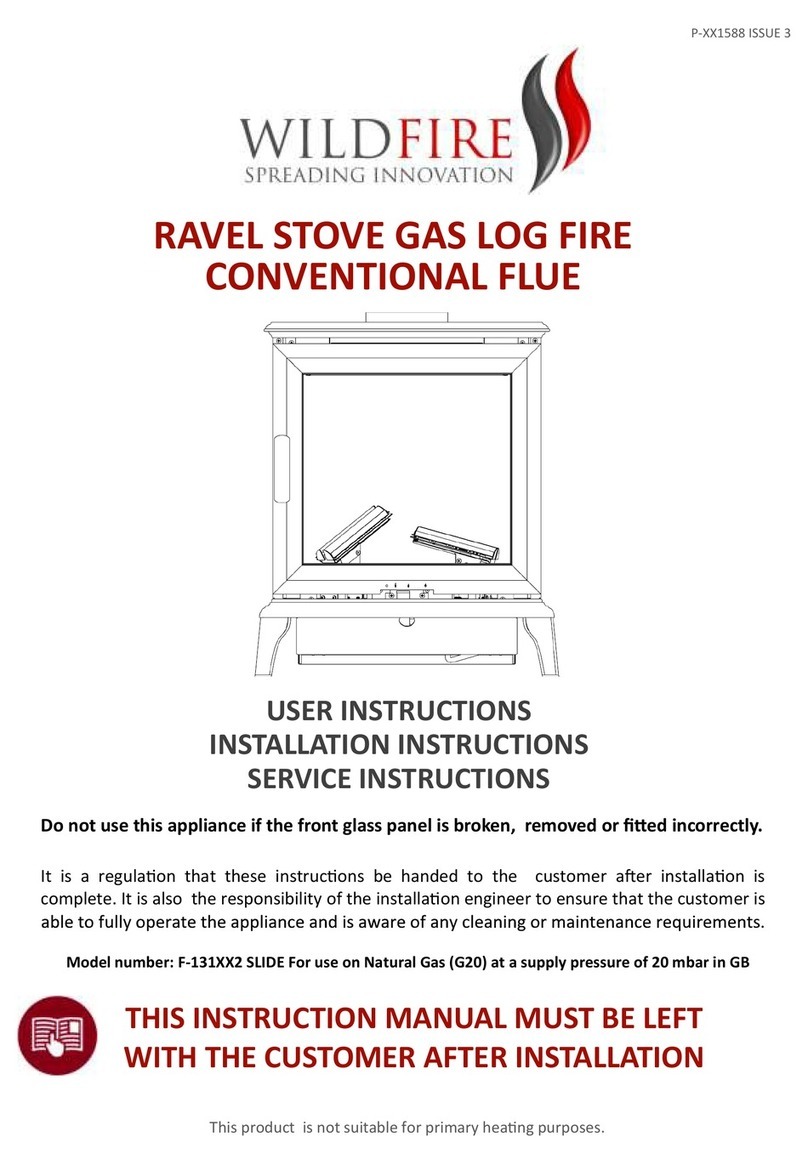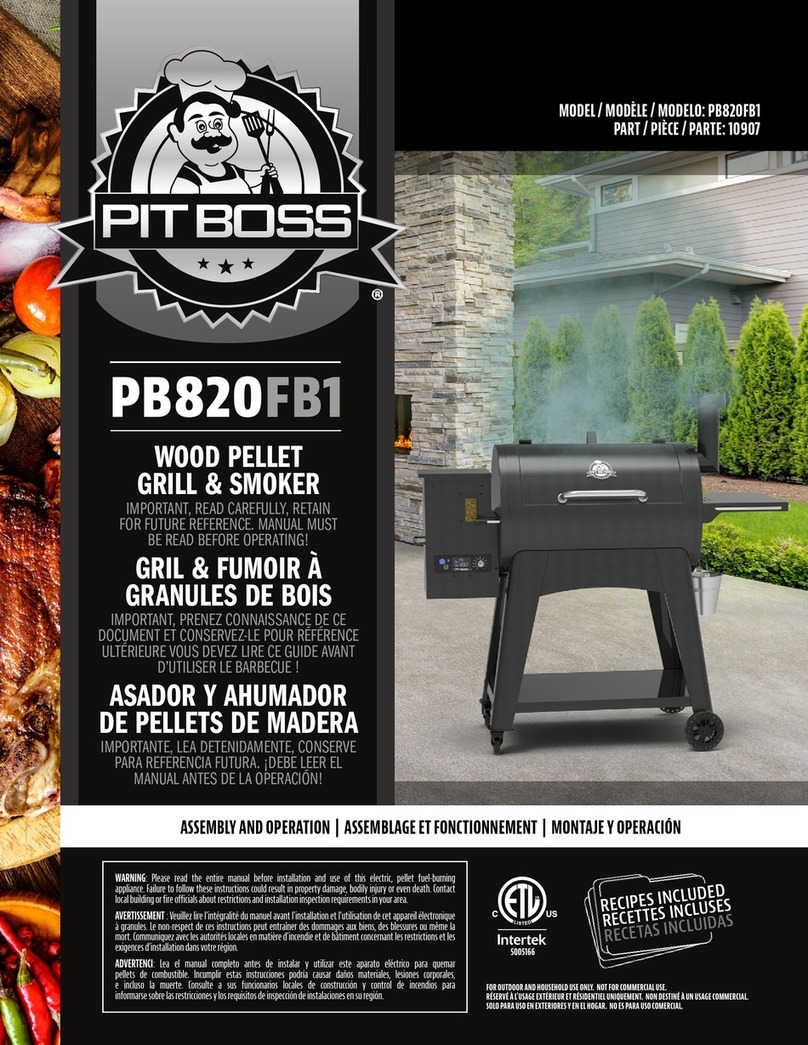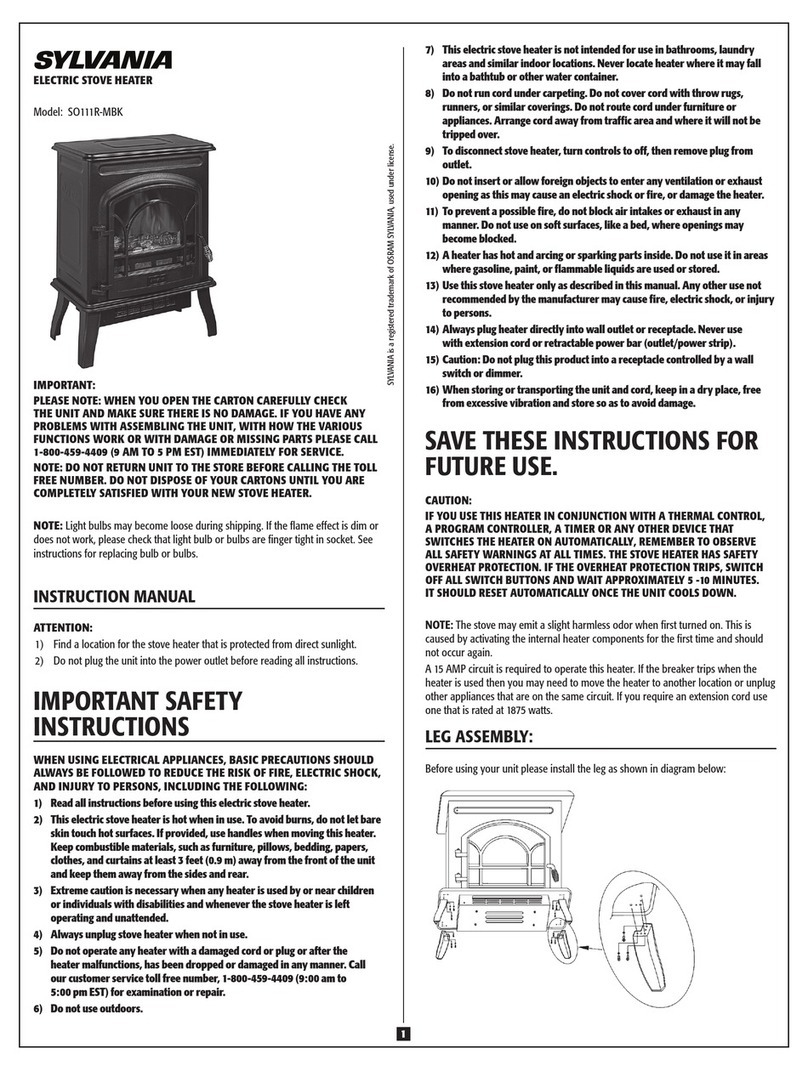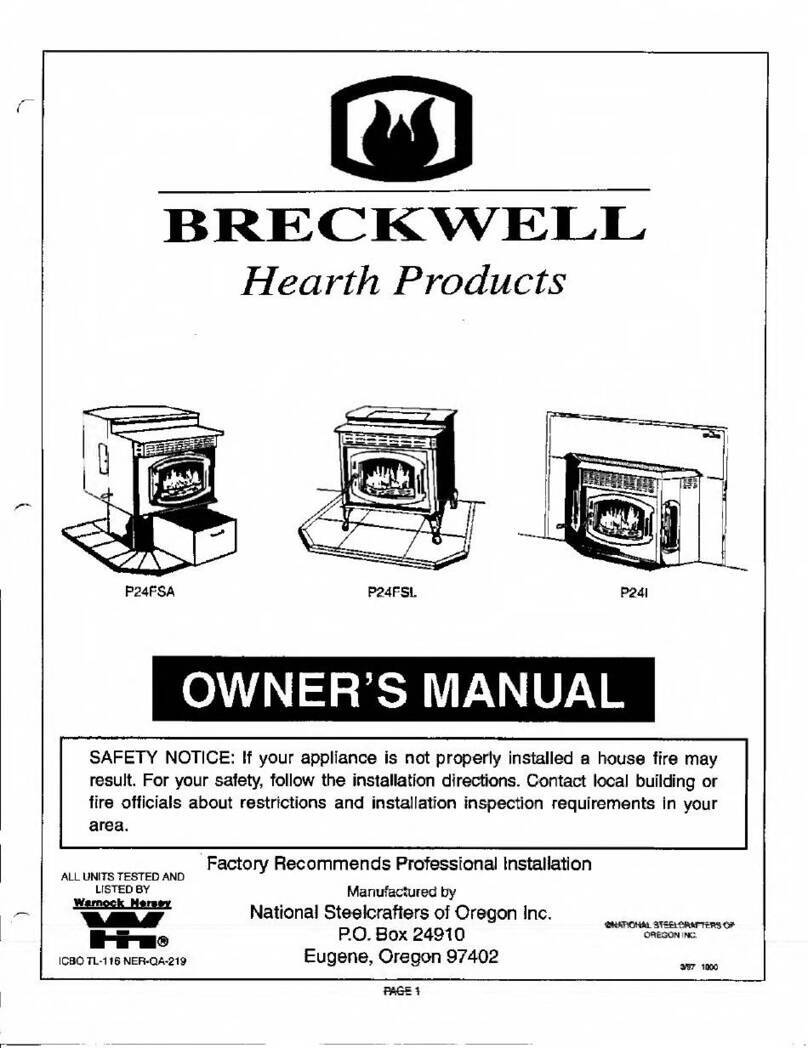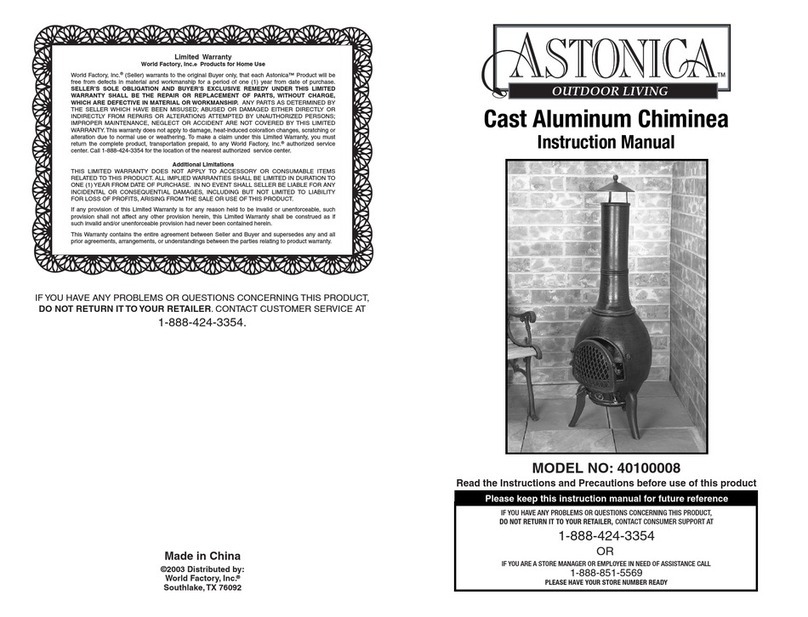
5.
Usage of stove
Sauna stove shall be operated in accordance with the national legislation and the requirements set out in this manual. If requirements in national
legislation and this manual vary, it is necessary to follow the more stringent requirements.
5.1.
Fuels
Use only dry natural wood logs as a fuel. Maximum refuelling loads and length of wood logs are given in Table 1 and Table 2. The stove must not
be stacked full of wood, avoid overheating the sauna stove. Wood logs must not be stored next to the stove, pay attention to the safety distances.
5.2.
Heating the stove
Note! Clean the stove bottom grate and empty the ashpan each time prior to heating the sauna.
Note! Do not heat the stove in a way that the flue pipe glows red, the stove overloads and it shortens the lifespan of the stove.
Note! Parts of the stove, especially the external surfaces, will be hot to touch when in operation and due care is needed to be taken. Use protective
glove, which is included in the package of the stove, for safe manipulation of the stove.
Note! Do not heat the stove without stones, except initial heating of stove outside.
Set the first load of wood loosely by placing the biggest firewood on the bottom and the smaller ones on the top into the firebox, add kindling
between the wood logs and light them. Add the actual refuelling loads when the fire has nearly burned down to embers.
The firebox shall be kept closed except during ignition, refuelling and removal of residue material to prevent fume spillage. Combustion air is brought
into firebox and it is regulated with sliding ashpan. Combustion air settings are given in Table 1. The stove has been designed to perform in most
efficient way when the draught in the flue is as given in Table 2. When the chimney is too long or diameter is too big, this optimal draught limit may
be exceeded. The draught may be adjusted by sliding ashpan or using a damper in case it is installed. A continuous excessive draught will shorten
the lifespan of the stove, as the stove overloads, and the stove becomes red-hot.
After using the sauna, it is recommended to keep a small fire going in the stove to remove moisture from the surfaces of the sauna.
In case of sootfire in the chimney: 1. Slowly close the ashpan and stove door; 2. Contact local fire authority; 3. Do not try to extinguish fire using
water; 4. After a sootfire, the chimney and the stove must be checked by the chimney sweeper before use.
5.3.
Sauna water
Clean, fresh water is suitable to be used as sauna water. Ensure that the water is always of sufficient quality: excessive salt, calcium, iron, and
sediments cause corrosion and shorten the lifespan of the stove significantly. Ferrous water may form rust-like spots on the surface of the stove.
Remove the spots by using a stainless steel detergent.
Note! Usage of sea water as sauna water is prohibited. The warranty for the Vilpra Sauna stove does not cover damages resulting from usage of
poor-quality sauna water.
5.4.
Sanitation of environment of stove
The stone and metal parts of the stove contain natural features that impact the cleanliness and need for sanitation in the sauna space. It is typical
for the sauna stones to deteriorate over time. Fine granular material may also separate from the steatite that washes away with the sauna water.
The smouldering of the furnace and heat of the stove may also separate minerals and metaldust. Due to the reasons mentioned above, white and
light materials should be kept away from the stove. It also must be ensured that tiling and floor surfaces can endure abrasive materials, high
temperature variations, and have sufficient sanitation. The characteristics mentioned above are features, not defects, and therefore are not covered
by the warranty and liability for damages of the manufacturer.
5.5.
Maintenance of stove
The chimney of the stove collects soot and ash over time, which must be removed if needed. Local regulations for chimney sweeping shall be met.
It is typical for sauna stones to disintegrate slowly. Therefore, they must be stacked again once a year, or more often if the sauna is used multiple
times a week. Simultaneously, stone debris collected in the stone space is removed, and crumbled stones are replaced with undamaged ones.
To retain a good draught, the chimney must be swept regularly. The ashpan must be emptied each time prior to heating of the sauna so that the
combustion air through the ashpan cools down the grating, and so ensures a long lifespan. It is recommended to keep a separate ash container
for the ash.
Note! The removed ash may contain burning embers, so store the ash container a sufficient distance from sensitive and combustible materials!
It is recommended to wipe the clear and brushed steel surfaces of the stove with a multi-purpose cleaner to prevent calcium stripes and rust-like
spots.

